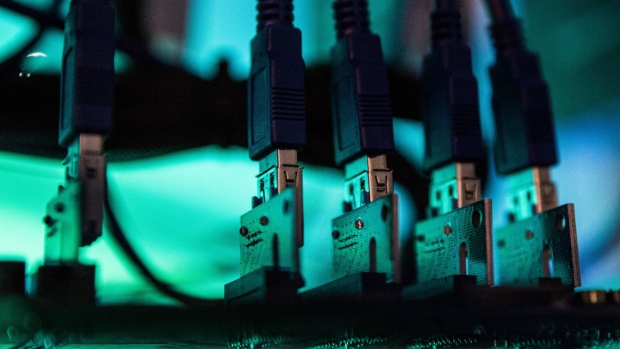Feb 13, 2023
Fallout of Crypto Stablecoin Regulation Spills Over to Decentralized Finance Sector
, Bloomberg News

(Bloomberg) -- Paxos Trust Co.’s move to halt issuing more of the Binance-branded stablecoin BUSD amid pressure from US regulators is trickling down into the world of decentralized finance.
Advocates of DeFi have long championed the system — which lets people trade, lend and borrow without intermediaries and often anonymously through the use of automated protocols — as the successor to so-called centralized finance.
Most of the concerns raised by the Paxos pullback are centered around the Binance-sponsored BNB Chain, which has the most BUSD usage in DeFi.
“The whole ecosystem will presumably have to pivot to a different stablecoin as its primary source of liquidity,” Andrew Thurman, researcher at Nansen, said about the BNB Chain, which is a public blockchain used for DeFi projects.
Stablecoins like BUSD, Tether’s USDT and Circle’s USDC are crypto tokens that are intended to hold a set value, for example $1. They come in a variety of forms and some are underpinned by reserves like cash and bonds. Investors often park funds in stablecoins as they move between crypto trades, with around $136 billion currently in circulation.
BUSD’s Footprint
Overall, BUSD — the third-largest stablecoin by market value — has a relatively small presence in DeFi, according to Riyad Carey, research analyst at crypto data firm Kaiko.
On the decentralized exchange Curve Finance, for example, there was about $10 million of BUSD in its BUSDv2 pool, the biggest liquidity pool used by traders to swap the stablecoin with other tokens on Curve.
Michael Egorov, founder of Curve Finance, said in an email response that regulatory actions against BUSD so far look “quite a safe sunset process” for BUSD holders.
The New York State Department of Financial Services said Monday that it directed Paxos to stop issuing new tokens of BUSD, which has roughly $16 billion in circulation. Blockchain data firm Nansen estimated about $144 million of BUSD was redeemed back to dollars in just a few hours following the announcement. New York-based Paxos said all existing BUSD coins remain fully supported and can be redeemed by customers through at least February 2024.
Curve Finance’s Egorov said that members of the decentralized autonomous organization managing the protocol may eventually vote to decrease the rewards provided in the BUSDv2 pool, which serve as incentives for users to provide BUSD liquidity. But the DAO, which runs the platform, has no power to shut down the BUSD pool.
On Aave, a major peer-to-peer lending project, discussions are being held on whether it should freeze the lending market for BUSD, according to a governance proposal by a community member. Aave currently does not accept BUSD as collateral for borrowing, according to crypto risk modeling platform Gauntlet.
Still, Gauntlet warned that lending projects that accept BUSD as a collateral asset should consider “immediately” pausing the corresponding lending market, with the total circling supply of BUSD to drop over time.
Other Stablecoins
The shutdown of BUSD also raises questions about the fate of other stablecoins in the decentralized sector, which still depends on them for access to fiat currencies. Circle’s USDC is the largest US-based stablecoin and the most used stablecoin in DeFi.
“That’s the bigger question,” Kaiko’s Carey said. “It’s absolutely possible that regulators come after USDC, which would be far more damaging to DeFi.”
Many DeFi advocates have long wanted to reduce the sector’s exposure to centralized tokens such as USDC, which is operated by Circle Internet Financial Ltd.
The algorithmic stablecoin project TerraUSD had gained traction in 2022 before its epic collapse. Terra’s failure was seen as a key catalyst for last year’s crypto market rout, and likely helped to spur the increased scrutiny on stablecoins as a whole.
For crypto market prices: CRYP; for top crypto news: TOP CRYPTO.
--With assistance from Olga Kharif.
©2023 Bloomberg L.P.





